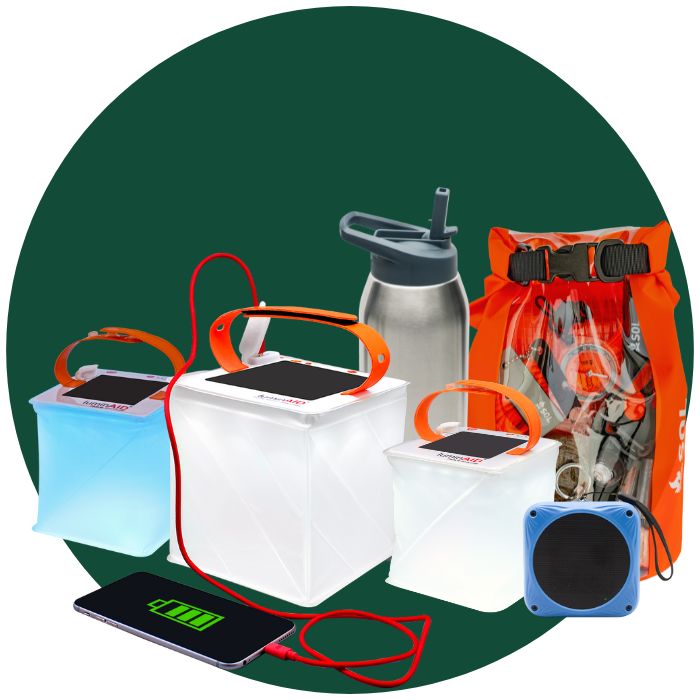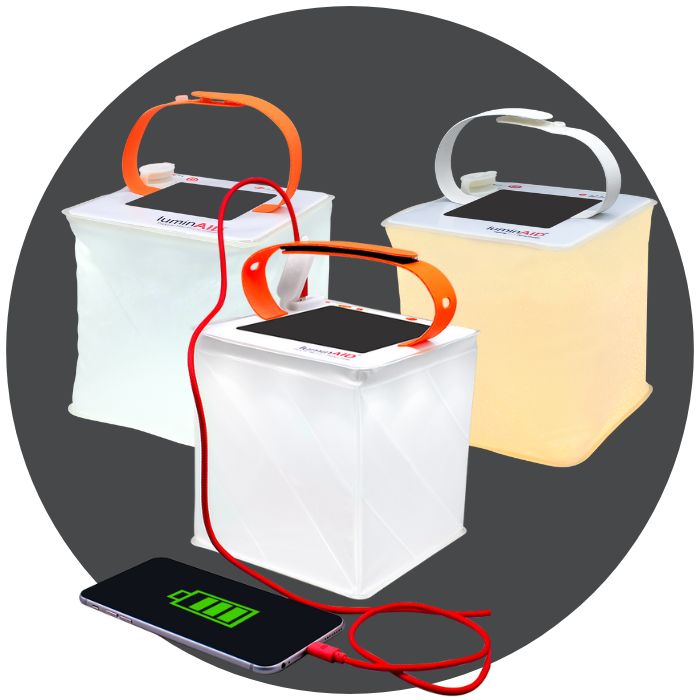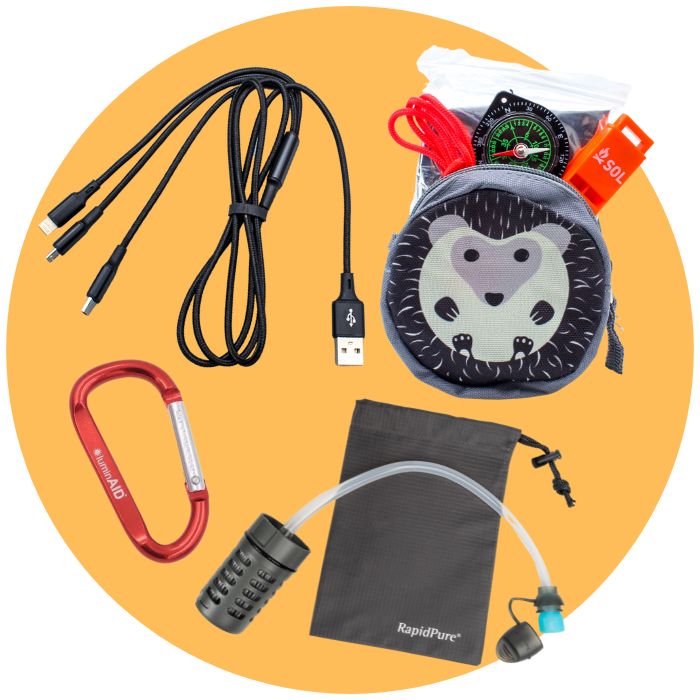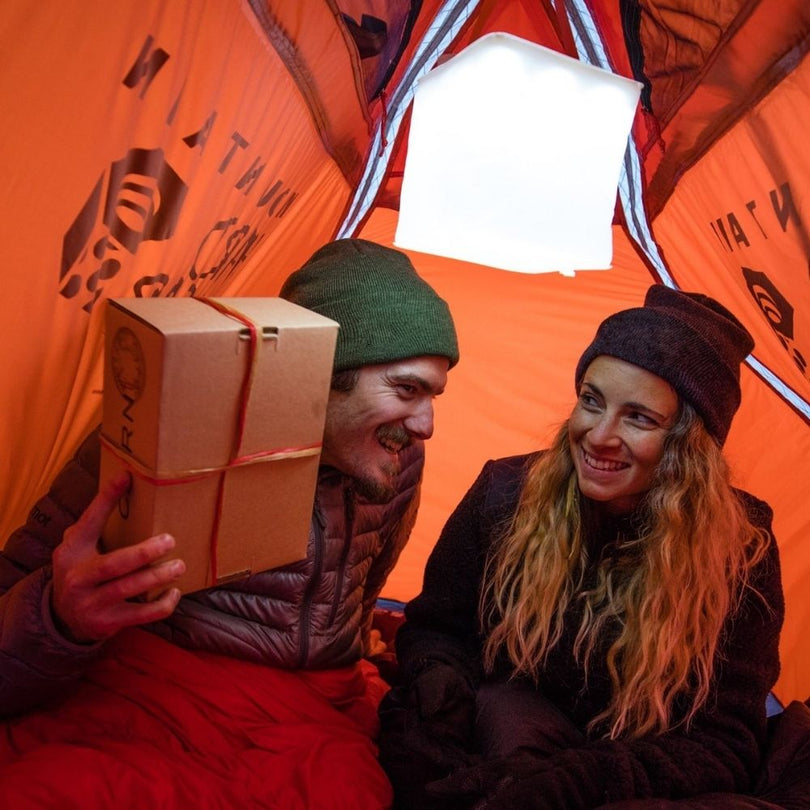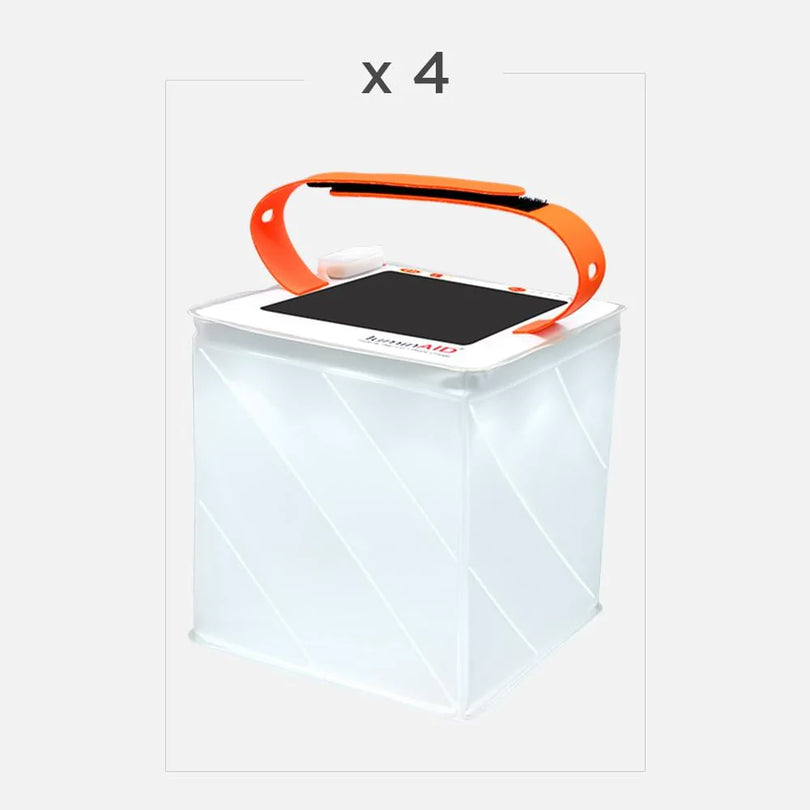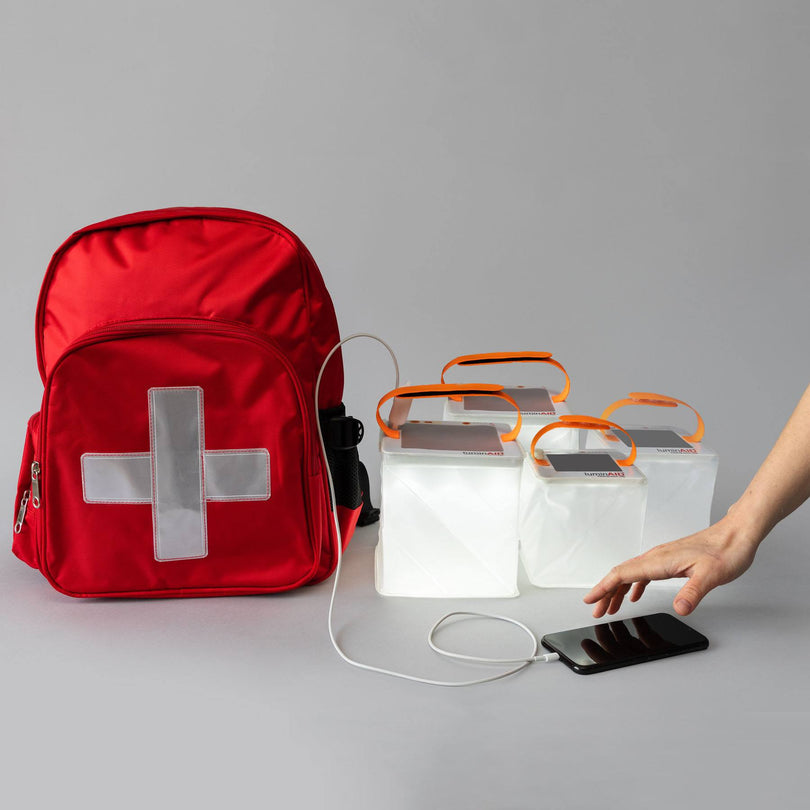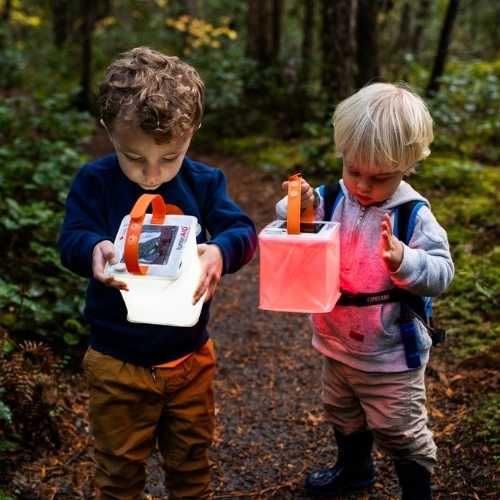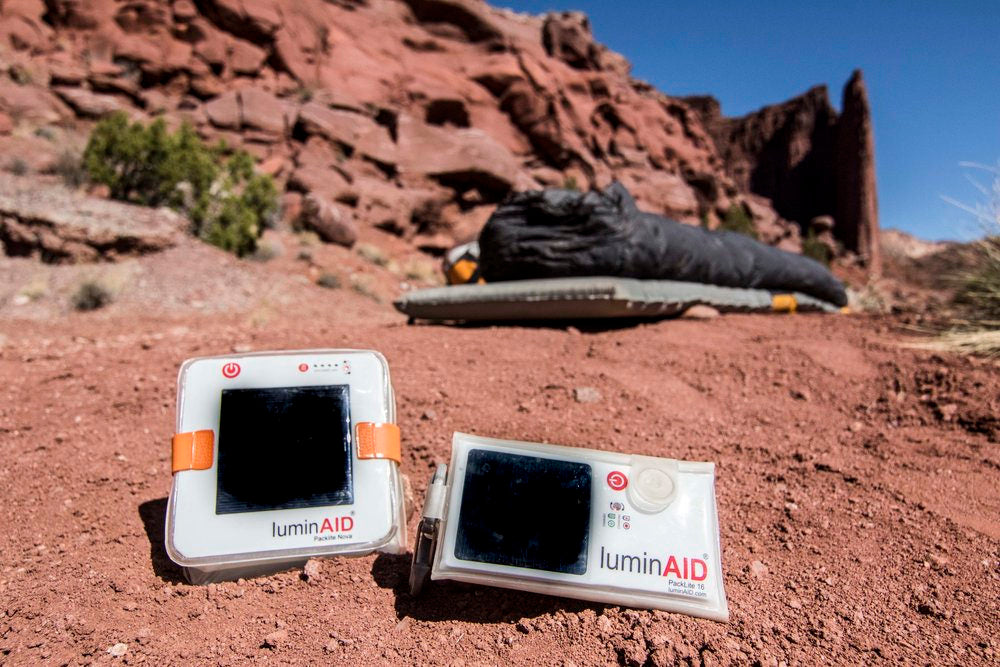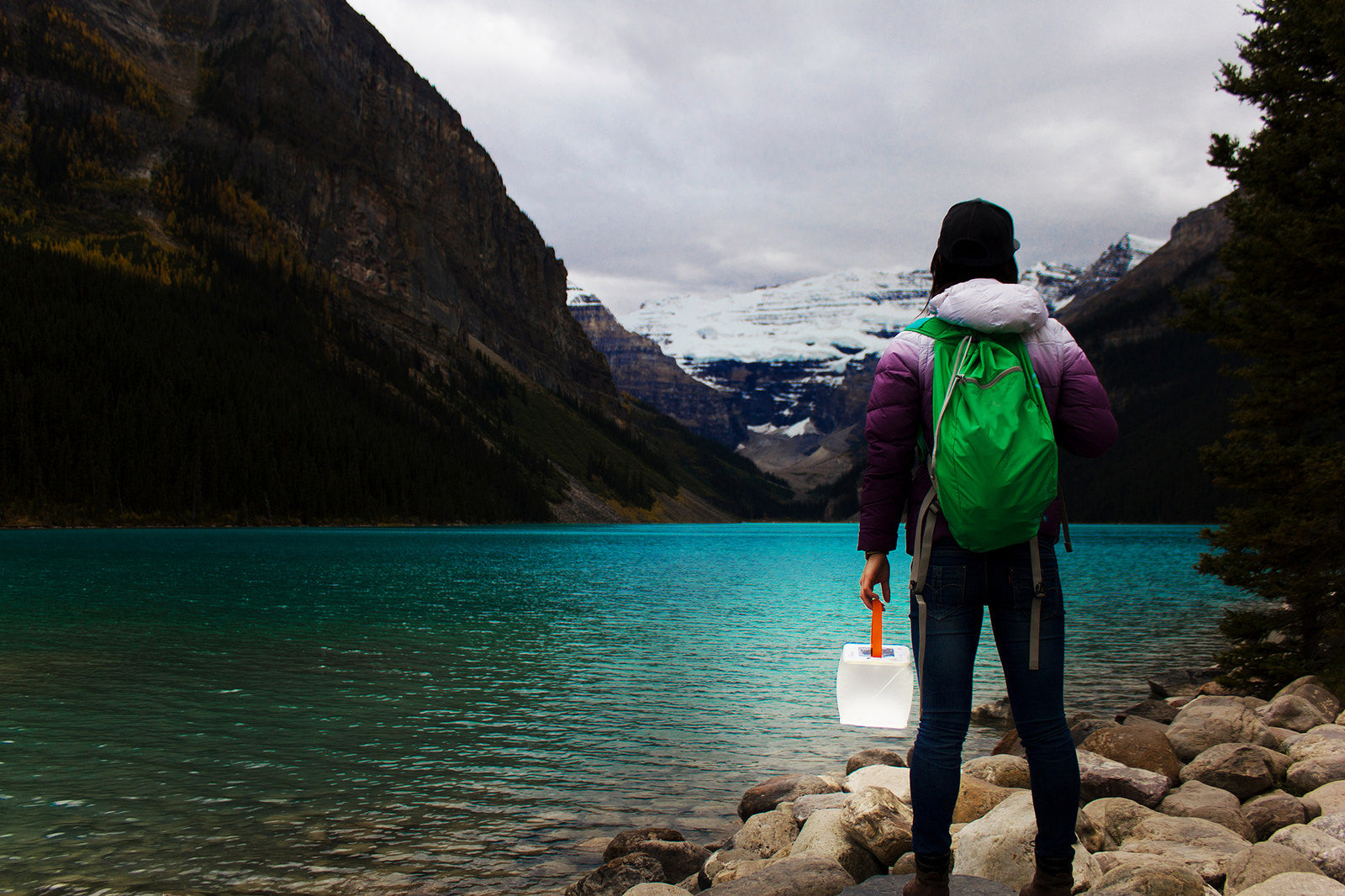Access to safe light can have a diverse and wide-ranging impact on families recovering from natural disasters, conflicts, or living in energy impoverished areas. Explore the ways that safe light can help families survive and thrive in communities worldwide.
Reduces Fire Hazard
Case: Convoy of Hope in Lebanon
In many communities recovering from disasters or in low-income regions have limited or no access to electricity. Due to the popularity of kerosene lanterns and open-flame candles as lighting sources in areas with limited or no access to electricity, these families are particularly vulnerable to fire hazards caused by fuel-based lighting. In these contexts, solar lanterns can be a life-saving lighting alternative for communities already struggling.
More than 200,000 people lose property or are injured by fires caused by kerosene lanterns each year in South Africa alone. In Sri Lanka, kerosene fuel accounts for around 40% of all burn cases. Children tend to be disproportionately affected by burn-related injuries; in one study in Bangladesh, over 60% of all burn victims of kerosene lamps or candles were under the age of 9. The effects of these injuries can have lifelong psychological, physical, and social effects on the victims. A switch from kerosene to solar lanterns can have longterm effects on the basic safety of communities.
Particularly among refugees and victims of natural disaster, limited electrical access combines with temporary housing flammability to increase the risk of fire for communities already financially and socially vulnerable. One study found that according to modest estimates over 380,000 refugees and displaced persons in humanitarian camps were left without shelter following tent fires between 1990-2015. These incidents have been increasing in rate and frequency in the past several years, with more refugees left homeless, injured, or killed from fires in humanitarian camps.
Solar lanterns offer a safe and portable alternative to fire-based light sources. LuminAID solar lights are designed to be easy to use, particularly useful in informal settlements in which existing infrastructure is limited. LuminAID lights are a safe alternative that can be immediately implemented and can significantly reduce fire hazard and burn incidents in vulnerable communities.
More Effective Health Services
Case: UNFPA in Nepal
An estimated 85,000 health clinics in developing countries lack dependable electricity. Without access to electricity or other clean lighting options, health providers in these areas struggle to provide life-saving care after dark. Particularly in rural areas, solar lighting can relieve the financial burden associated with fuel-based light sources, and allow these health clinics focus precious funds on improving care.
Portable solar lanterns can help these health workers provide safe responses to health emergencies that begin or extend into the night. Rural women’s health care—and midwifery services in particular-—can benefit from portable solar lighting as a safe resource for health care in energy poor communities, without risk of fire or fumes endangering the health of the patients. In Nepal, LuminAID solar lights have been used to light up over 80 maternity units for women just before or after delivering their babies. Safe lighting is a crucial part of effective health services, and portable solar lights are a powerful response to the need for safe and versatile lights for health workers in energy poor communities. Portable lighting in particular is an asset for practitioners who perform house calls and small scale clinics who provide crucial but under-funded services.
Empowers Interest in Tech
The impact of LuminAID is shaped not just by the invention, but also by the women who invented it. LuminAID was invented and founded by two women in college, Anna Stork and Andrea Sreshta. Co-founders Anna and Andrea stand as strong positive examples for women interested in tech and entrepreneurship, sectors where participation of women is disproportionately low. As women business-owners and inventors, they work to inspire girls and support women as powerful new voices to create an innovative and inclusive community in tech and entrepreneurship.
Both Anna and Andrea are proud mentors for the Chicago Innovation Awards’ Women Mentoring Co-op. Through this group, they work to empower and advise Chicago women who are seeking to bolster their careers and businesses. As a start-up whose inventors and creators are women, LuminAID occupies an regrettably unique position in the business world. Currently, LuminAID is part of only 5% of all American startups that are headed by women.
The co-founders know that bridging this gap will require helping girls and young women realize their passions in STEM fields and entrepreneurship. The two women have served as mentors at Grrl Squad, a summer program which aims to empower girls with the skills and support to excel in math and science. As an innovative designer, Anna was featured in the children’s book Engineering: Cool Women Who Design. Anna and Andrea are adamant about empowering the next generation of women in science, design, and entrepreneurship.
Reduces Barriers to Learning
Case: Twende Solar in Cambodia
An estimated 263 million children are out of primary and secondary school worldwide. Insufficient, unreliable, and dangerous lighting can be a limiting factor for many areas already struggling to provide education access to children. Solar lanterns allow many school buildings to offer school days, previously limited by cloudy weather or high costs of fuel. Children in developing countries benefit from access to solar lighting as a safe resource for at-home learning. Solar lights allow kids to safely read or study after school hours: a simple educational advantage previously limited by weak and unsafe light sources.
LuminAID solar lights are used in a number of schoolrooms worldwide including in Malawi, Syrian Refugee Camps, Tanzania, and Uganda. In one poignant example, the non-profit Focus Africa followed up with a boy named Isaac in Zambia who had received a LuminAID lantern. Isaac was previously unable to do homework in his home with no electricity, but after receiving the LuminAID lantern Isaac was finally able to study at home and improved an entire letter grade in a single semester.
LuminAID solar lights are free-standing, portable, and personal sized allowing for independent and versatile use for children regardless of the studying environment. Access to safe light without recurring fuel costs increase children’s study hours outside of school and encourage their educational success. By partnering with education-focused NGOs such as the Kikulu Foundation (Uganda) and Pencils of Promise (Laos), LuminAID collaborates to boost school attendance rates and kids’ educational prospects.
Minimizes Household Energy Costs
Case: ChildFund in Uganda
The cost of a home without electric lights is high. Energy poor families are estimated to spend 40 billion USD annually on fuel for inefficient candles and kerosene lanterns. To get the same light as electrified homes, families without electricity may spend up to 100-times more money. With solar lanterns, households are able to save crucial resources and focus on health and education for their families.
Simply lighting one’s household levies a huge cost on families already struggling. In South Africa, low income households tend to spend up to a quarter of their monthly income on household energy alone. Spending excessive money on fuel-based lighting (which also has significant health risks) defers precious resources from family health and education.
The strongest alternative is solar lighting, which has no recurring fuel costs, limited upkeep, and depends on highly accessible energy. Once families have the lights in hand, they no longer have to buy fuel or spend time collecting it. LuminAID solar lights are designed with an integrated battery that allows for continual charging and easy storage of solar energy. High efficiency solar panels allow users to maximize charging even on overcast days.
Something as simple as replacing kerosene lanterns with solar lights can have a bigger effect on family livelihoods than expected, as the money saved can be redirected to medical care, children’s education, or investment in tools for small craft and trade activities. In this way, solar lights can have a compounding positive effect on the economic resources of a family, and can help alleviate the related burdens of energy poverty in developing countries.
Expands Opportunities for Self Employment
Case: Peace Corps in Madagascar, Peace Corps in Madagascar II
Behind agriculture, craft-making is the second most common employment in many rural areas worldwide. It tends to be seasonally-flexible, and can often be done from home, allowing women with limited child care options to nevertheless seek self-employment. However, delicate craft work is often dependent on access to good tools and good light at home. As around 1.1 billion people worldwide are estimated to lack any electrical access, safe light can have a boost on the local economy, and expand opportunities for women to be self-employed.
Solar lanterns can help transform economic circumstances by providing an essential business resource: safe light. Safe and sufficient lighting is integral for craft-makers and self-employed artisans. These craft-makers and artisans also help keep cultural traditions alive, while growing the local economy. Women in particular benefit from tools that support craft-making activities, making up a major portion of artisans in rural areas worldwide.
By supporting the flexibility, safety, and ease with which artisans can produce crafts, solar lights empower job creation. In combination with reducing household energy costs, access to solar lighting can improve individuals earning potential and help alleviate poverty in low income communities.
Leads to Healthier Families
Families without access to reliable electricity often suffer health risks just to have access to light. Fuel-based lights popular in homes without electricity put families at a greater risk of burns, respiratory problems, and accidental poisonings. The consequences of these risks can be devastating, particularly for children, who are disproportionately more likely to sustain burns, inhale dangerous indoor fumes, and accidentally ingest poisonous liquids from fuel-based lighting. Solar lights offer a safe and cost-effective alternative, and can help significantly reduce health risks for vulnerable families.
The WHO estimates that 3.8 million people die prematurely each year due to illnesses attributed to poor indoor air quality. A major contributor to pollutants in the home is kerosene lanterns: a popular and accessible lighting alternative for energy poor households. Burning kerosene and other biofuels in closed indoor spaces is linked to respiratory issues, as well as vertigo, memory loss, or even blood and kidney damage. Among these dangers is the release of carbon monoxide, a byproduct of kerosene lanterns if they reach incomplete combustion. Since women tend to spend more time at home in developing communities, they are more likely to face adverse health effects from poor indoor air quality. According to one study, women in Nepal who depended on kerosene lanterns for lighting were nine times more likely to have tuberculosis than those who used electric light. By reducing the amount of dangerous fumes families are exposed to, solar lanterns can have a significant positive effect on their health and well-being.
Poisoning, particularly among children and infants, is another major danger of kerosene lantern use. Kerosene lanterns use liquid kerosene fuel, which is often stored indoors for easy access and can be accidentally ingested by children. In fact, accidental kerosene ingestion is one of the most common causes of child poisoning in developing countries. Nearly 80,000 kids each year unintentionally drink kerosene fuel in South Africa alone. One of the central goals of implementing LuminAID solar lanterns is to reduce household dependence on kerosene, improving health in developing communities and potentially saving lives.
Replacing kerosene lanterns and candles with solar lanterns can have a positive impact on health equity in developing countries. Solar lighting helps reduce the health burden on women and children by helping improve overall indoor air quality standards and increasing household safety. LuminAID solar lanterns are also all PVC-free, avoiding any exposure to potentially dangerous chemicals used in the production of some other solar products. With access to safe solar lighting, energy poor families can live healthier lives without having to expose themselves to pollution-related health risks, while protecting their children from burns and poisonings.
Brings Comfort to Victims
Case: American Foundation for Children with AIDS
Light can be more than a tool for after dark; it is also a source of comfort and safety in dark times. Families living in temporary shelters following disasters are often left in uncertainty when the sun sets. Entire communities can be left without safe access to light, unable to perform simple chores or activities. Parents have difficulty safely caring for their children, and the people cannot safely move and interact in the community. Personal solar lanterns are a versatile solution to provide safety, comfort, and mobility for recovering communities.
Following disaster and conflict, comfort is an essential psychological need, in whatever form it comes. Light is a source of comfort for families. Women and girls in particular report feelings of improved safety and comfort with access to safe portable light. A light shining at home is a first step to a household that can function, rebuild, and begin to thrive. Communities can gather together at the end of a day of work, and rebuild a sense of normalcy under the glow of lanterns.
LuminAID solar lights are designed with adjustable handles and can be easily hung and arranged to suit the circumstance of the users. In temporary communities such as refugee camps, even when toilets or other services are lighted at night, the lack of tent and path lighting can make simple trips dangerous and uncomfortable. Flameless and handheld, the LuminAID lanterns are highly portable to accompany users safely for a variety of nighttime activities. Since LuminAID solar lights are safe and portable, they can be safely and easily operated by children—those often left most vulnerable following disaster or displacement. Implementation of versatile solar lights puts the power back in the hands of those who need it most.
Contributes to Stability Following a Disaster
Case: Convoy of Hope in Peru
By partnering with humanitarian organizations working on the ground in post-disaster zones, LuminAID has been able to get safe light to disaster victims when it’s needed. LuminAID partners such as Convoy of Hope, Shelterbox, and Doctors Without Borders are able to pre-arrange aid so that essential supplies including food, shelter, and light can reach victims of natural disasters or conflict quickly. Swift access to aid can make a major difference in the human cost sustained by destabilized communities.
Shipping costs, user training, and lack of infrastructure can be significant hurdles for some aid organizations to provide life-saving supplies. LuminAID lanterns are designed to bypass each of these potential hurdles, and get needed aid to victims as quickly as possible with low implementation costs for the sponsor. For LuminAID solar lights, there is no set-up or infrastructure required; the solar lights can be used immediately. The minimalist design of the lanterns also means they are intuitive to use, so there is limited need for user training. LuminAID solar lanterns can hold a charge for up to 2 years in storage, meaning the time between when the lanterns are deployed and when they bring light to victims is virtually nonexistent. The compact design of the lanterns also makes them more affordable and efficient for aid organizations to ship; 25 LuminAID lanterns fit in a box that would hold only 8 traditional flashlights.
The LuminAID solar lanterns are designed to be efficient and reliable even in the instability following a disaster. The solar lanterns are waterproof, dustproof, and easy to use. They require no additional fuel, and require virtually no recurring costs for the user. The solar lanterns offer a safe alternative to toxic fumes and open flames that pose an even higher safety risk in temporary structures following a disaster. The flashing feature built into every LuminAID lantern can serve as an alert system if additional danger arises. Each aspect of the LuminAID lanterns is designed to streamline implementation, eliminate recurring costs, and suit the needs of users safely and responsibly.
Helps the Earth
Inefficient and unsafe lights are not only dangerous for human health, but for the health of the Earth as well. Greenhouse-gas emissions produced by unsafe light sources (including biofuels, disposable batteries, kerosene, and propane) are roughly equivalent to the emissions from 30 million American cars. In contrast, solar-powered lighting requires no biofuel and produces no fumes and no CO2 during use. Solar is a naturally renewable energy that improves environmental as well as household air quality—improving air quality for individuals and the global community.
Deforestation is another worrisome environmental outcome of energy poverty around the world. In communities without electrical access, families often depend on wood gathered or harvested from surrounding areas in order to light, heat, and cook in their homes or shelters. This dependence on fuelwood can be particularly detrimental in refugee and displaced person camps, where in some cases there is not viable wood found within 15km from the camps. Solar power can reduce dependence on fuelwood and therefore reduce the environmental cost to areas with refugee or displaced person camps.
Safe and clean lighting is a key step towards meeting the United Nations Sustainable Development Goals. One of these goals is to ensure universal access to clean household energy by 2030. Improving household energy is an important step towards reducing the production of polluting air contaminants and curbing atmospheric warming. Solar lighting systems help alleviate costs to human health, resources, and ecosystems incurred by inefficient fuels often used in low- and middle-income countries.
Helps Break Down Barriers for Women and Girls
Case: Peace Corps in Cameroon
Case: UNFPA Nepal
One surprising result of access to safe lighting is its positive impact on women and girls. Access to solar light reduces manual labor that particularly affects girls and women, allows female artisans to work comfortably and safely, and reduces dangerous household fumes produced by fuel-based lighting sources. Further, LuminAID solar lights are used to illuminate safe spaces for women and children in recovery centers and for medical services.
In low- and middle-income countries, girls share a disproportionate burden of families’ fuel and water collection. In some areas, this work can amount to 30 hours each week. Solar lanterns reduce the amount of time spent collecting firewood or fuel for household lighting—freeing up time for women and girls. This time can then be spent on education, or craft-making and artisanship—activities which increase women’s intellectual and economic independence.
The solar lanterns here are an asset, since these craft-making activities require safe and sufficient lighting. When kerosene lanterns are used, these artisans struggle from eye strain and exposure to fumes from close proximity to weak and toxic lighting. Women and girls in particular are more likely to spend time indoors, increasing their exposure to poor indoor air quality linked to kerosene lantern use. In contrast, LuminAID solar lanterns are safe and offer strong and consistent lighting, with several lighting levels for artisans to choose the light level appropriate for their work. Further, freeing up women’s time for education activities has a big impact on women and girls, as they are often less likely than boys to attend school.
Partnering with organization such as UNFPA Nepal have allowed LuminAID to integrate safe lighting into campaigns that foster women’s health and safety following disasters. With UNFPA Nepal, LuminAID lanterns were a part of the Female Friendly Space program, which gave basic hygiene and safety items to women left vulnerable after a disaster. UNFPA Nepal also provided a space for the women to gather and talk to medical and mental health professionals. Women using the LuminAID solar lanterns reported increased feelings of safety at night, particularly when using the outdoor latrine at night. LuminAID solar lanterns have also been used in rural maternity wards with limited to no electricity, helping doctors and mothers safely deliver and care for babies after dark.
References
"263 Million Children and Youth Are Out of School." UNESCO Institute for Statistics. April 27, 2017. Accessed July 20, 2017. http://uis.unesco.org/en/news/263-million-children-and-youth-are-out-school.
The Alliance for Artisan Enterprise: Bringing Artisan Enterprise to Scale. Report. October 12, 2012. Accessed June 17, 2017. https://assets.aspeninstitute.org/content/uploads/files/content/images/Concept%20Paper%20AAE%20-%20FINAL.pdf.
Kazerooni Y, et al. Fires in refugee and displaced persons settlements: The current situation and opportunities to improve fire prevention and control. Burns (2016), http://dx.doi.org/10.1016/j.burns.2015.11.008.
Mills, Evan. "Can technology free developing countries from light poverty?" The Guardian, July 30, 2015. Accessed July 23, 2017. https://www.theguardian.com/global-development-professionals-network/2015/jul/30/can-technology-free-developing-countries-from-light-poverty.
Mills, Evan. “Health Impacts of Fuel-based Lighting.” Proceedings of 3rd International Off-Grid Lighting Conference, Dakar, Senegal. October 16, 2012. Accessed June 19, 2017. http://light.lbl.gov/pubs/tr/Lumina-TR10-health-impacts.pdf.
Mills, Evan. "Identifying and reducing the health and safety impacts of fuel-based lighting." Energy for Sustainable Development 30 (May 2, 2015): 39-50. http://dx.doi.org/10.1016/j.esd.2015.11.002.
Perkins, Sam. "Light impacts SGBV, but not in the way you think." UNHCR Innovation. August 5, 2015. Accessed July 23, 2017. http://www.unhcr.org/innovation/light-impacts-sgbv-but-not-in-the-way-you-think/.
Stewart, Dehran, and Barry Bredenkamp. "The Challenges of Addressing Household Energy Poverty." Proceedings of Strategies to Overcome Poverty and Inequality Conference - Towards Carnegie III, University of Cape Town. August 29, 2012. Accessed July 21, 2017. http://www.carnegie3.org.za/docs/papers/258%20THE%20CHALLENGE%20OF%20ADDRESSING%20HOUSEHOLD%20ENERGY%20POVERTY%20%28FINAL%29.pdf.
Van Dorp, Mark. Dealing with energy needs in humanitarian crisis response operations. Report. September 2009. Accessed July 21, 2017. http://www.envirosecurity.org/fuel/Quick_Scan_FUEL_project.pdf.
Walden, Stephanie. "These STEM initiatives are inspiring women and girls around the globe." Mashable. January 22, 2016. Accessed July 20, 2017. http://mashable.com/2016/01/22/women-in-stem-global/#hdjV59dGUuqp.
World Health Organization (WHO). Burning Opportunity: Clean Household Energy for Health, Sustainable Development, and Wellbeing of Women and Children. 2016.
World Health Organization (WHO). Household Air Pollution and Health. Fact Sheet 292. February 2016. Accessed June 17, 2017. http://www.who.int/mediacentre/factsheets/fs292/en/.
United Nations Development Programme. “Delivering Sustainable Energy in a Changing Climate: Strategy Note on Sustainable Energy 2017-2021.” Report. 2016.

